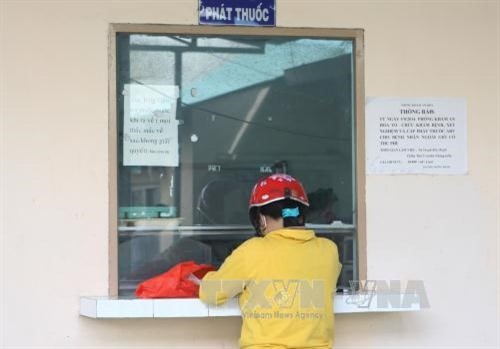 Society
Society

An additional 2,430 people with HIV were diagnosed in the first six months of the year, an increase of 732 compared to the same period last year, according to the HCM City Centre for HIV/AIDS Prevention and Control.
 |
| A woman with HIV receives ARV drugs at a health centre in District 6. — VNA/VNS Photo Phương Vy |
HCM CITY — An additional 2,430 people with HIV were diagnosed in the first six months of the year, an increase of 732 compared to the same period last year, according to the HCM City Centre for HIV/AIDS Prevention and Control.
Tiêu Thị Thu Vân, the centre’s head, told Việt Nam News Agency that most of these people had had HIV for a rather long time, but had never been tested.
In recent years, Việt Nam has enhanced screening and testing for high-risk people to achieve the UN’s 90-90-90 goals in HIV prevention and control by 2020.
Under the goals, by 2020, 90 per cent of all people living with HIV will know their HIV status. Ninety per cent of people with a diagnosed HIV infection will receive sustained antiretroviral (ARV) therapy, while 90 per cent of all people receiving antiretroviral therapy will have viral suppression.
In the first half of the year, nearly 287,000 people were tested and 95 per cent of them were positive for HIV. They were brought to outpatient examination clinics in the city for treatment.
“Detecting more people with HIV and taking them to the city’s treatment programmes is very important because many of them do not know their status and they are at a high risk of transmission to others. They are difficult to access. However, now many of them can be detected, so transmission should stop,” Vân told Việt Nam News Agency.
The city has more than 40,000 people with HIV and nearly 10,000 have not yet been detected because agencies have not had access to them, she said.
Dr Nguyễn Trung Hòa, director of the Preventive Health Centre in Gò Vấp District, told Sài Gòn Giải Phóng (Liberated Sài Gòn) newspaper that if people with HIV are detected early, they will receive antiretroviral (ARV) therapy in time and be able to live like healthy people.
HCM City is one of 30 cities worldwide that were the first to commit to the UN 90-90-90 goals in HIV prevention and control by 2020, she said.
The US President’s Emergency Plan for AIDS Relief (PEPFAR), which is the US government’s response to the global HIV/AIDS epidemic, has provided sponsorship for the city so that it could reach its goals quickly.
The donated funds have been used for peers to access groups of high-risk people such as prostitutes and drug injectors, especially the group of men who have sex with men.
It also has been used to buy rapid test kits for HIV detection and other activities related to HIV prevention and control.
Moreover, the city’s agencies have expanded communication to reduce discrimination against people with HIV, Vân said.
The city also will improve quality of preventive and treating services in order to ensure that people with HIV have opportunities for detection and treatment, she added.
The city Department of Health has co-operated with the Centre for Reproductive Healthcare to carry out programmes on prevention of mother-to-child transmission of HIV at 58 health facilities for pregnant women.
In the first six months of the year, 44,500 pregnant women were provided counselling and testing.
At least 93 per cent of pregnant women with HIV received ARV therapy, which helps prevent transmission of the virus to their baby. The women’s newborns also continue to receive treatment for mother-to-child transmission services.
Challenges
Currently, patients with HIV receive free treatment, but next year they will have to cover the costs as funding for treatment is drying up from international sources.
Health insurance will cover the costs, but 10 per cent of these patients do not have health insurance.
Vân said this was a challenge for the UN 90-90-90 goals. If no financial sponsorship can be found, the city will spend part of its budget to buy health insurance cards for people with HIV.
Another challenge is the upward trend of HIV drug resistance among people with HIV, with the rate of 6 per cent to 7 per cent who have HIV.
The cost for treatment for people with HIV drug resistance is five or 10 times higher than normal treatment, Vân said, adding that non-adherence to treatment regimens results in resistance.
To improve surveillance and treatment, the city plans to strengthen co-ordination with other neighbouring provinces and cities in HIV prevention and control to avoid losing contact with people with HIV. — VNS




